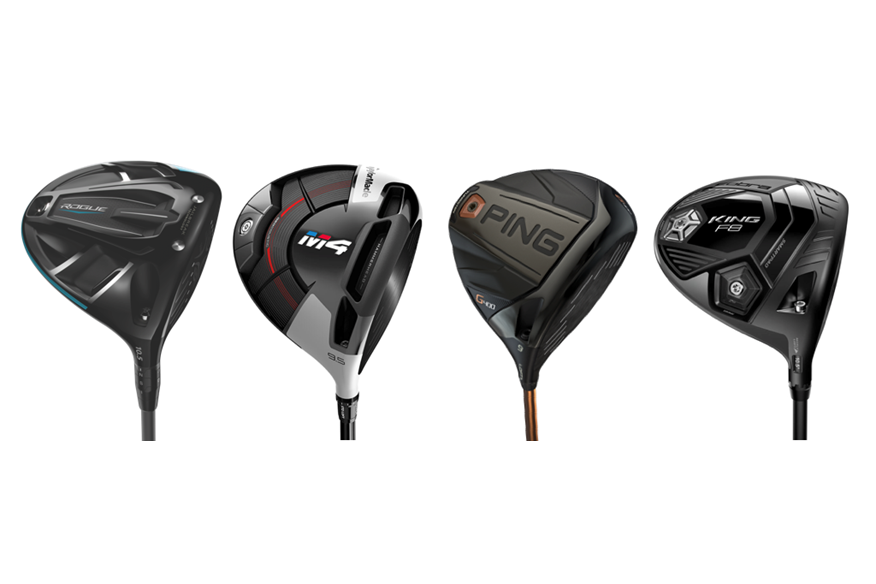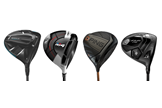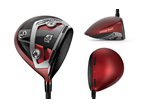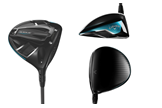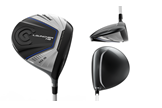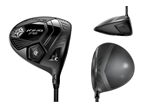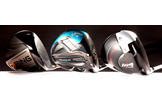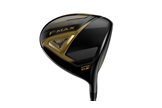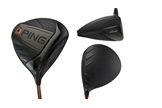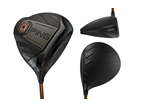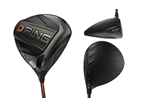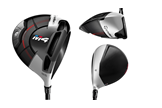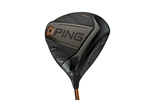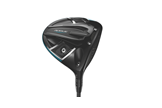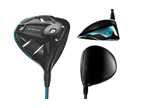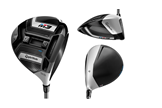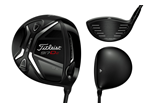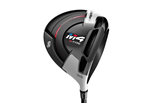The Best Drivers of 2018: Tested
Last updated:
Best Drivers 2018: We put the latest 2018 drivers on the market to the test to find out which is longest, straightest and most forgiving.
Click here for 2019 Drivers test
Have we ever done a more important drivers test? I’m not sure we have… There has already been so much recorded and written about this year’s new best drivers – including Callaway’s Rogues, TaylorMade’s Ms and other clubs from Ping, Cobra, Cleveland, Mizuno and Wilson. But this is the first time – anywhere – they’ve all been tested back-to-back.
How we did it: We asked leading manufacturers to send us their latest 2018 models in each of the tester’s specs. We created an indoor test lab (to ensure a controlled environment), and used Foresight Sports’ GC Quad launch monitor to capture each player’s clubs and ball data for every shot hit. We rejected major misses, but recorded data for how shots launched into the air, as well as where shots impacted the clubface. After some serious number crunching, plenty of heated discussion and much head scratching, we came up with our verdict on which are the best of 2018.
| Chris Jones (11 HCP)) |
Simon Daddow (10 HCP) |
Ben Frost (Test Pro) | |
| Longest Driver? (Average Carry) | 238 YARDS Callaway Rogue | 217 YARDS TaylorMade M4 D-Type Callaway Rogue Draw |
274 YARDS TaylorMade M3 Callaway Rogue |
| Which Driver Created The Most Ball Speed? |
142mph Ping G400 MAX |
138mph TaylorMade M4 D-Type |
158mph Callaway Rogue |
| 3 Favourite 2018 Drivers | 1: Callaway Rogue 2: TaylorMade M3 3: Ping G400 MAX |
1: Callaway Rogue Draw 2: TaylorMade M4 D-Type 3: Ping G400 SFT |
1: Callaway Rogue 2: TaylorMade M3 3: Ping G400 |
Callaway Rogue – £469
| Lofts | 9°, 10.5°, 13.5° |
| Stock Shafts | Aldila Quaranta (40g), Aldila Synergy (50g) Project X EvenFlow (60g), Project X Hzrdus (70g/80g) |
| Adjustable Hosel | Yes |
| How much loft change? | -1°/+2 |
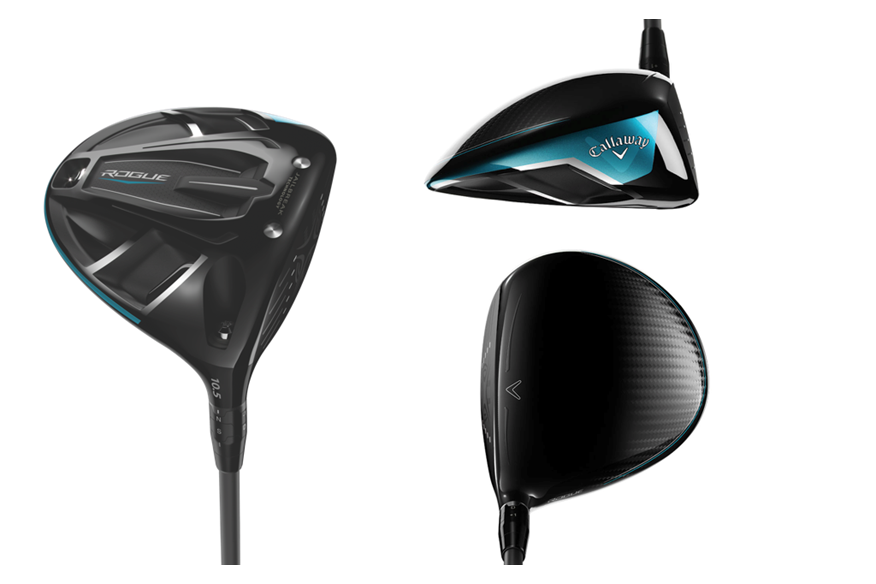
YOU NEED TO KNOW
All the game-changing Jailbreak tech you’ll find in last year’s Callaway Epic driver, but pumped full of more performance for 2018. Losing a weight track saves 15g, the stretched head is 10% bigger, and because MOI performance has increased by 600 points Callaway say dispersion is 10% tighter than the Epic. Thanks to all this tuning, new Jailbreak tech and an established aero package, Callaway say you can expect up to 1.5-2mph of extra ball speed over the Epic.
WE SAY
Rogue is light years ahead of last year’s Epic. It has a more friendly, wide head shape which, for a majority of golfers, will boost confidence. The Jailbreak tech in the Epic was a giant leap forward in performance, so golfers are likely to see smaller gains moving from Epic to Rogue, which spells out how Rogue is a more sensible purchase for golfers with pre-Epic drivers. In our test pro’s hands Rogue produced his fastest average ball speed and longest average carry (274 yards, shared with TaylorMade’s M3).
It speaks volumes about the Rogue’s excellent package of distance combined with forgiveness. A similarly strong performance for TG Editor Chris Jones (who’s prone to spraying shots all over the face). He racked up his longest average carry (238 yards) and fastest single ball speed (158mph), meaning Rogue will be an excellent match for lots of club golfers.
VERDICT
£469 is an eye-watering amount to pay for a new driver, but Rogue (like a number of other drivers) is crammed full of expensive technology (titanium bars, carbon crown), and that’s now the going rate for a top-specific big stick. It’s a big leap forward in forgiveness performance over the Epic – just make it your business to get the right shaft as there’s plenty to choose from.
HOW IT COMPARES TO THE GBB EPIC…
The Callaway Epic was fantastic as long as you were a reasonably consistent striker. How the Epic Sub Zero offered more forgiveness (if the 12g weight was kept in the back port) for the average golfer was a bit confusing and proved how much weight a sliding track takes up. Our consistent-hitting test pro was three yards shorter (carry) with the Epic than the Rogue, and when you factor in the extra fairway-finding forgiveness on offer from the latter, it means there’s a significant step up in terms of performance this year.
TaylorMade M4
| Lofts | 8.5°, 9.5°, 10.5°, 12° |
| Stock Shaft | Fujikura Atmos Red |
| Adjustable Hosel | Yes |
| Loft Change | +/-2° |
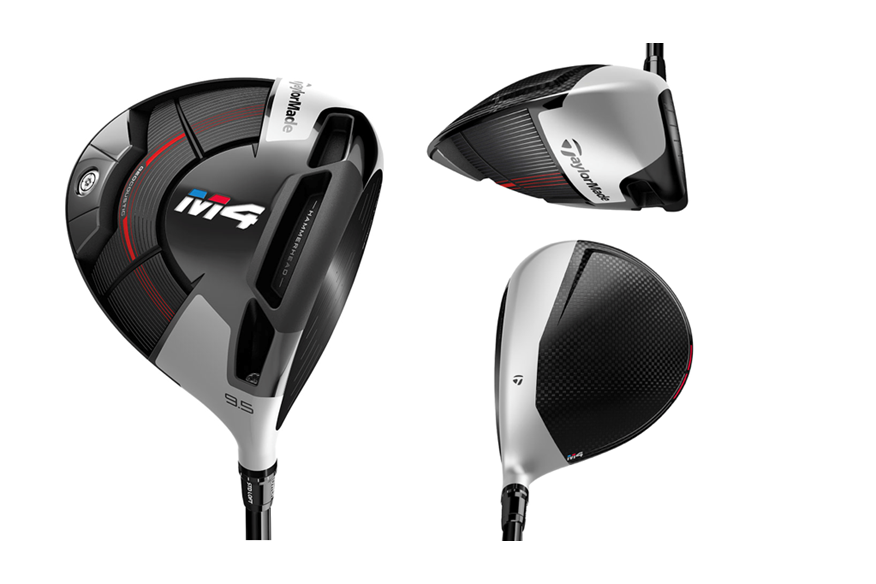
YOU NEED TO KNOW
All the same Twist Face and Hammerhead tech as the M3, but with 41g (up from 22g in the M2) of weight positioned in the rear weight pad to max out forgiveness. Geocoustic engineering means the recessed sole frees up volume (creating a bigger, more forgiving footprint) and produces higher frequencies to sound and feel better. A five-layer carbon crown and matt silver paint job give an indisputably TaylorMade look.
WE SAY
TaylorMade’s new Twist Face tech has commanded tons of column inches and YouTube views, but the first thing you’ve got to realise is the M4’s face (like the M3’s) is nowhere near as twisted as the graphics you’ve seen. Sit the M4 down alongside an M2 and the untrained eye will struggle to spot a difference, which is a really good thing.
All three testers found M4 generated higher levels of backspin, which is likely down to 41g of mass being located so far back in the head, meaning it’s well worth your time to select a shaft carefully – our test pro picked up 13 yards of carry by finding his best match. They’re only tweaks, but we like the new silver matt colour and how the carbon- bre crown joins the titanium leading edge is more subtly shaped. The million-dollar question is does Twist Face work? Simply, yes – read our twist face test here
VERDICT
World No.1 Dustin Johnson won on his first start of 2018 with an M4 in his bag, giving the club instant tour validation. It produced very solid distance and forgiveness numbers for our testers without quite topping the pile. Experience tells us along with the Callaway Rogue and Ping G400 MAX it will be among the best-selling drivers of 2018.
HOW IT COMPARES TO THE 2017 M2…
All three testers agreed the new silver paint scheme makes the M4’s head look a fraction smaller alongside last year’s M2, which isn’t a bad thing at all. Numbers-wise, our test pro saw a gain of 3mph of ball speed, and one extra yard of carry distance switching to the M4, which proves the new Hammerhead tech is more effective than last year’s speed slot. The distance gain would have been more, but 300rpm of extra backspin robbed the M4 of a handful of yards.
TaylorMade M3 – £479
| Lofts | 8.5°, 9.5°, 10.5°, 12° |
| Stock shaft | Mitsubishi Tensei Red / Blue / White |
| Adjustable Hosel | Yes |
| Loft Change | +/-2° |
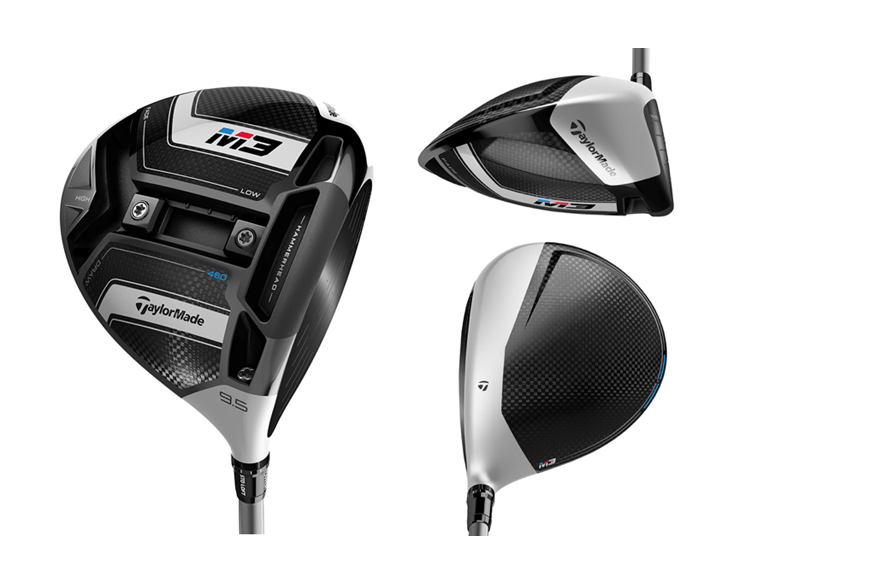
YOU NEED TO KNOW
Twist Face tech opens the face and increases loft in the high toe area, and slightly closes it and reduces loft in the low heel. It means golfers’ typical misses have more consistent sidespin, tightening dispersion by up to 11 yards. A Hammerhead slot in the sole reinforces the outer portion of the face, meaning it’s lighter, more flexible and faster. 22g of weight can be moved around the Y-shaped sole track to reduce/ increase spin, increase forgiveness and/or influence shot shape bias.
WE SAY
Alongside an M3, TaylorMade’s original M1 looks positively agricultural, which shows how far the dual weight track driver has come in just three years. A carbon crown and two carbon- bre sole sections mean the M3’s a serious feat of engineering. More so than any driver we’ve tested before, moving the sole weights has a huge e ect on ball speed, backspin and carry.
It means finding the right set-up is absolutely crucial. Our test pro recorded his longest average carry (274 yards) as well as his longest single shot (282 yards) with an M3, even though ball speed was a couple of mph slower than the fastest on test. His longest shot came 8mm from the toe and 12mm high on the face, without either sole weight being positioned for maximum forgiveness; that shows how stable and efficient the M3’s slightly smaller footprint (compared to M4) really is.
VERDICT
Another TaylorMade driver which will dominate on tour, as its ability to let decent players dial in launch, trajectory, spin and forgiveness is unparalleled. It’s not just for good golfers, either; TG Ed Chris Jones, whose impact locations look like pebble dashing, was a massive fan, and M3 consistently gave him some of his longest drives.
HOW IT COMPARES TO THE 2017 M1…
For many golfers the main story behind M3 is Twist Face, but for us the new Y-Track is just as big a deal; it really makes a big difference to ball flight. It’s this ability to personalise spin that helped our test pro lower his by a fraction over the M1, adding an extra couple of yards of carry distance. Obviously not enough for most club golfers to warrant splurging £479 on upgrading from the last year’s M1, but well worth further investigation if you still swear by an SLDR.
Callaway Rogue Sub Zero – £469
| Lofts |
9°, 10.5° |
| Stock Shaft | Aldila Quaranta (40g), Aldila Synergy (50g) Project X EvenFlow (60g), Project X Hzrdus (70g/80g) |
| Adjustable Hosel | Yes |
| Loft Options | -1°/+2° |
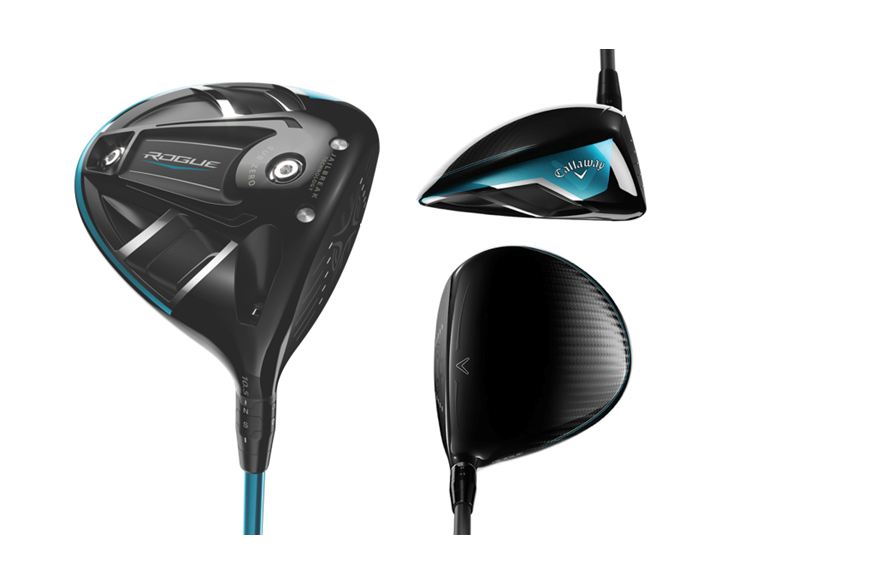
YOU NEED TO KNOW
Much more of a pro style driver than the GBB Epic Sub Zero, which was more forgiving than the standard Epic in 2017. Two sole weights (14g and 2g) can be swapped to cut spin for high swing speed players. All the same aerodynamic, jailbreak and composite crown tech as the standard Rogue, but with a 5g heavier head. Expect to see the Sub Zero in Sergio Garcia’s bag throughout 2018.
WE SAY
2018 in our eyes is a reset year for Sub Zero. What do we mean? Well, where the 2017 Epic Sub Zero could be set up as the most forgiving driver in Callaway’s range, this year’s Rogue Sub Zero can’t. Its profile has been specifically tailored to the eye of better players (especially tour players) who don’t necessarily want a big, wide-footprint driver sat behind the ball at address.
In reality, the 2018 Sub Zero was only really suited to our test pro, and though he posted his joint fastest ball speed (single shot, not average) with the Sub Zero (159mph, tied with the Ping G400, standard Rogue and Cleveland’s Launcher HB) his average numbers didn’t quite rival his very best. By switching the 14g sole weight to the front port, our pro increased ball speed by 1mph, cut spin by 120rpm and added two yards of carry.
VERDICT
If you’ve got a mate who rips it past you with an Epic Sub Zero, do not be tempted to rush and buy the updated Rogue model straight off the rack. It’s not designed for mere mortals who have an office job and only get to play once a week. Rogue Sub Zero is a serious player’s driver. By all means demo it alongside the standard Rogue, but trust us they’re like chalk and cheese when it comes to forgiveness.
HOW IT COMPARES TO THE GBB EPIC SUB ZERO…
TG Editor Chris Jones has played GBB Epic Sub Zero throughout 2017 and loves it, so we were as surprised as anyone when Callaway’s fitter recommended Rogue standard for 2018. Our test pro saw a 1.5° lower launch going from the same loft, weight arrangement and shaft set up Epic Sub Zero to Rogue Sub Zero. There was a definite ball speed improvement with Rogue, but carry distance difference was negligible, meaning to us that Epic Sub Zero is still a fantastic driver.
Ping G400 – £389
| Lofts | 9°, 10.5° |
| Stock Shaft | Ping Alta CB55 / Ping Tour 65 |
| Adjustable Hosel | Yes |
| Loft Change | +/-1° |
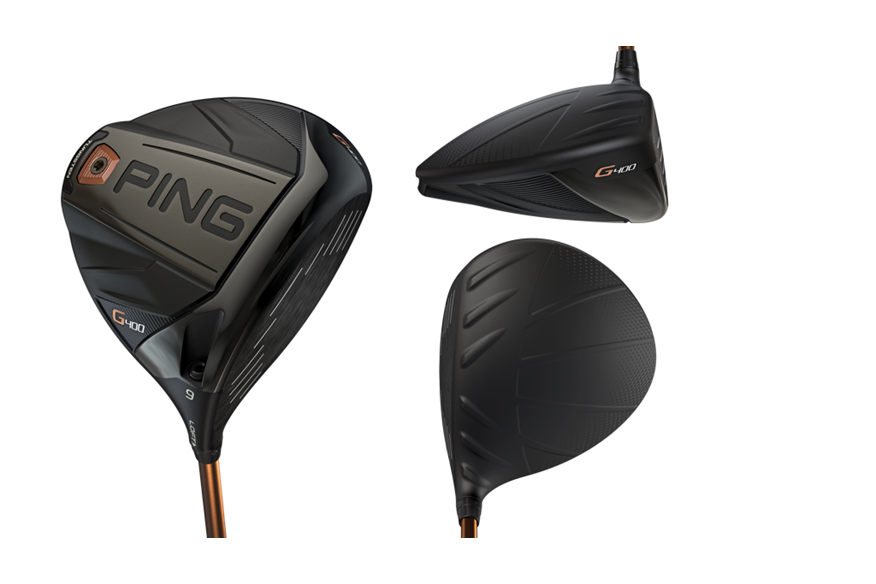
YOU NEED TO KNOW
A slightly smaller head with improved aerodynamics and forgiveness stability make the G400 Ping’s fastest driver. Ping say the multi-material construction improves ball speed by 2mph over the previous G model. Extensive frequency and vibration research deliver a deeper muted impact sound similar to nailing a traditional persimmon driver.
WE SAY
Over the years Ping have set the benchmark for club golfers’ drivers; they’re always very solid, built on sound engineering principles and perform just as well on the golf course as they do on the driving range. Ping say the G400’s slightly smaller head (445cc vs 460cc) means it’s faster through the air, yet MOI and forgiveness are higher than the competition. None of our testers recorded their very longest carries with the G400.
Our pro though equalled his fastest individual ball speed (159mph, tied with Rogue Sub Zero, Rogue Standard and Cleveland Launcher HB) with a shot 9mm off the toe – that speaks volumes about the G400’s forgiveness. The sound of the all-titanium head is a lot like modern carbon-clad drivers (carbon-fibre absorbs vibration) – muted and powerful – which is much nicer than the original G and previous Ping models. The single-colour matt black head gives a simple look at address, meaning for many golfers the G400 is a really honest, straightforward, high-performance golf club.
VERDICT
The G400 is a great driver. But if you’re considering one in 2018, make sure you try it alongside the new G400 MAX (460cc). In the right golfer’s hands, we saw some very impressive gains in favour of the MAX.
HOW IT COMPARES TO THE G400 LST AND G400 MAX…
Ping G400 Max – £389
| Lofts |
9°, 10.5° |
| Stock Shaft | Ping Alta CB, Ping Tour 65 / 75, Alta Distanza |
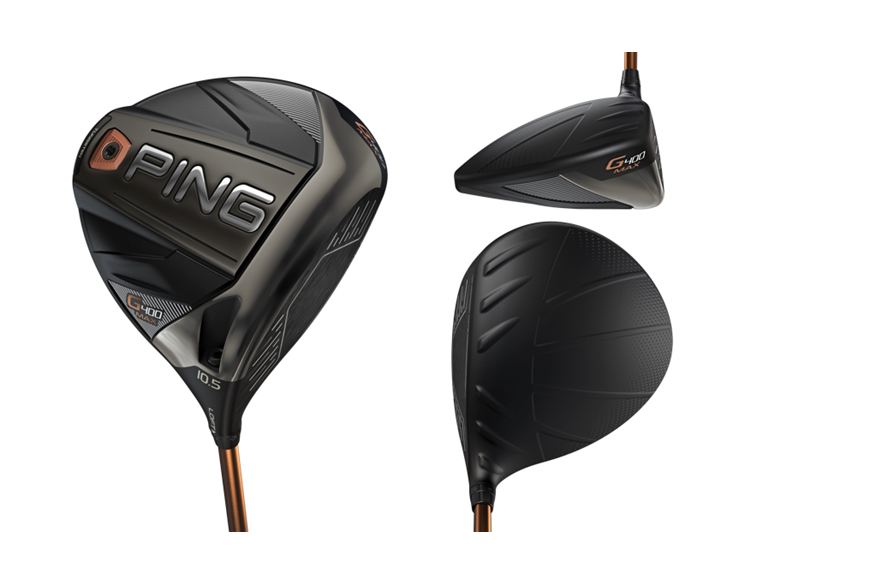
While the other Ping Gs are 445cc, this is 460cc. You may lose a little club speed thanks to the extra size, but this is more than made up for in forgiveness. It’s particularly useful for golfers who want to hit more fairways. For our erratic editor, it was a revelation, posting his fastest average ball speed (142mph) along with his longest individual shot carry distance (249 yards).
It’s worth noting that Tony Finau and Trey Mullinax, who are ranked No.1 and No.2 in driving distance on the PGA Tour, all both using the G400 Max this season. Simply put, you can’t buy a G400 driver in 2018 without looking at MAX, too.
Ping G400 LST – £389
| Lofts | 8.5°, 10° |
| Stock Shafts | Ping Tour 65 / Ping Alta CB55 |
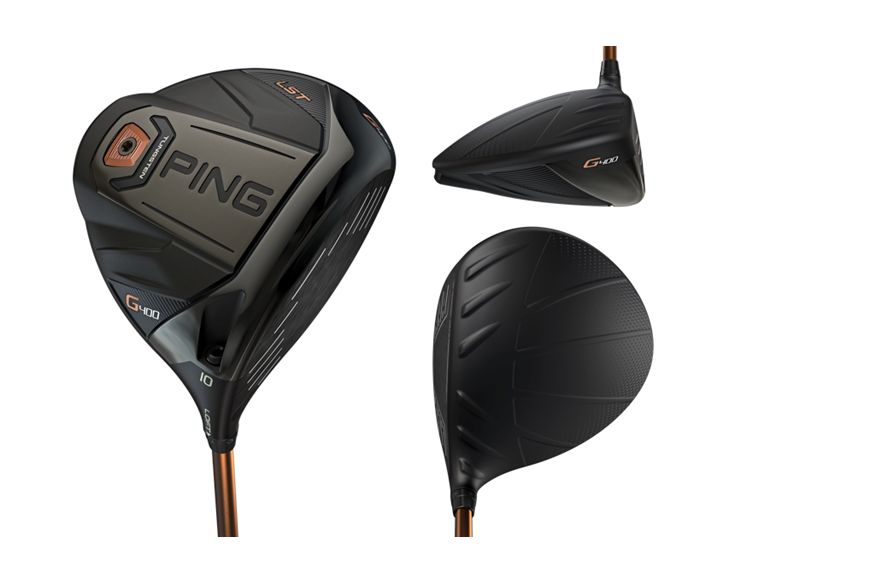
All the same aero and ball speed performance as the standard G400, but thanks to moving mass forward backspin is lowered by about 300rpm. Ping say the tech (as well as a slightly heavier head) promotes a slightly lower ball flight, with stable and controllable spin which is particularly well suited to higher swing speeds.
For our test pro, the LST cut backspin by close to 500rpm, lowered launch by 0.5° and added five yards of carry.
Cobra King F8 – £329
| Lofts | 9°-12° |
| Stock Shafts | Mitsubishi Tensei CK Blue 50, Aldila NV 2KXV Blue 6 Aldila NV 2KXV Green 65, Project X Hzrdus Yellow 75 |
| Adjustable Hosel | Yes |
| Loft Options | 9°-12° |
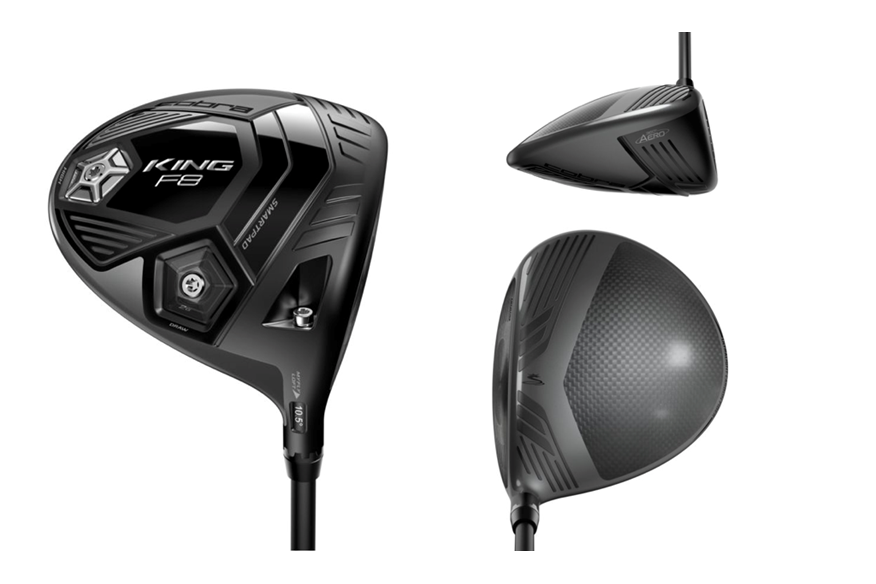
YOU NEED TO KNOW
The Cobra King F8 is the first driver with a 100% CNC milled face. Cobra say it allows the face to be 3% thinner and 10% lighter, and improves consistency between every head produced. 360° aero trips improve aerodynamics throughout the swing, two sole weights dial in a neutral or draw bias shot shape. A five-layer carbon crown helps lower and deepen the centre of gravity for excellent forgiveness. Every F8 comes with Cobra Connect shot tracking.
WE SAY
Cobra are among the most high-tech big dogs we’ve tested since Puma took control of the company a number of years ago. But, for us, the reason Cobra haven’t quite smashed their way into being major players in the driver market is the brand’s insistence on some wacky paint jobs over the years. For 2018 they’ve grown up, and are sticking to a single grey offering, and we reckon it’s a big step forward. Cobra haven’t shouted nearly as loud as TaylorMade about their new 100% milled face tech, but it’s every bit as complicated to create as Twist Face.
There’s actually three different radi vertically on the face, which helps optimise launch and spin for low and high face strikes. The F8 performed best for Simon with its 12g sole weight in the draw position, posting a carry distance just two yards down on his longest of the test. A massive plus for us is the selection of premium shaft weights and pro les, from a light, responsive Mitsubishi Tensei 50g all the way up to a heavy Project X HZRDUS Yellow 75.
VERDICT
The F8 is a fantastic driver. It looks the business, it’s powerful and forgiving, sounds great and it’s the only driver with a shot tracking sensor in the grip. If you’re considering a draw driver, the F8 should be on your shortlist – sole weight and hosel adjustability mean there’s 12 yards of draw bias on offer, which is every bit as good as the competition.
HOW IT COMPARES TO THE KING F8+…
A smaller tour-profile head with front and back sole weights to deliver lower spin rates for high swing speed players. It’s Rickie Fowler’s 2018 driver, and after its performance in our test pro’s hands it proves once and for all how much sole and internal weighting can impact performance. Switching from the standard F8, our pro added 1mph of ball speed, cut back spin by 500rpm and gained 10 yards of carry. For hard hitting golfers who really need help.
Mizuno ST180 – £399
| Lofts | 9.5°, 12.5° |
| Stock Shafts | Three premium options |
| Adjustable Hosel | Yes |
| Loft Change | +/-2° |

YOU NEED TO KNOW
For golfers who like the look of wide driver heads, but don’t want the spin usually associated with them. This is Mizuno’s first driver to have a wave sole (to increase face deflection and maximise ball speeds). It commits every last gram low and forward to drop spin rates for even the fastest, most downward strikers. A new titanium multi-thickness face protects ball speed for off-centre hits.
WE SAY
Competition in the driver market is fierce, and Mizuno would be the first to admit their business is not based around driver sales. But the ST’s price runs to £399, which puts it above TaylorMade’s M4 and the Ping G400, so there needs to be some serious performance on offer to get anyone to dig deep and invest in one. All three testers felt the head sat a little closed at address, but sound is perfectly acceptable and the forgiveness on offer thanks to the wide head was good enough to see our test pro’s longest shot come from 7mm away from the centre of the face. Our test pro was the ST’s biggest fan, saying he could easily put one in the bag, even though it wasn’t his longest or fastest driver on test.
VERDICT
You’ll need to be a serious Mizuno fan (of which there are many) to give the ST a good look at this price. For those who do put one in play, you won’t be disappointed – it’s a decent performing driver. We just can’t help thinking that for most club golfers with £400 to spend on a big stick, there are slightly faster, more forgiving or longer drivers on the market for slightly less money.
Titleist 917 D2 – £450
| Loft | 8.5°, 9.5°, 10.5°, 12° |
| Stock Shaft | Aldila Rogue Max / Fujikura Speeder Pro / Mitsubishi Diamana RED, Blue, White |
| Adjustable Hosel | Yes |
| Loft Change | +1.5°/-0.75° |
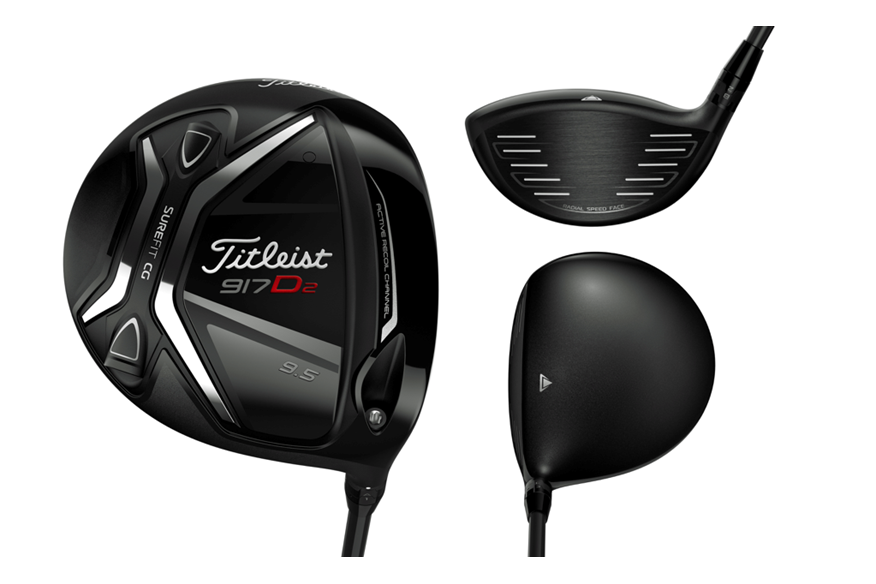
YOU NEED TO KNOW
Titleist’s first adjustable CG driver. A SureFit weight cartridge can be flipped to allow the CG to be moved from toe to heel and back to forward. An improved Active Recoil Channel in the sole engages more of the head in the exing process at impact and a new Radial Speed face delivers greater off-centre ball speeds. The SureFit hosel allows independent loft and lie set up for ultimate precision when tting.
WE SAY
Titleist have the likes of Justin Thomas averaging over 310 yards on tour with a D2, so there’s no doubt the 917 has pedigree. But Titleist work on a two-year product cycle, which means the D2 was introduced in 2016, so its tech now feels a bit old-hat against the newest models. It is a good-looking, old fashioned shiny driver; Simon played one until switching to the G400 midway through last year, but there’s no escaping how two testers on average were 10 yards shorter than their longest clubs. What you do get with Titleist, though, that you don’t get with every brand is an absolutely first-class fitting service. If you can take the time and effort to get to a proper fitting centre, there are tons of shaft options, ensuring you get it optimised for your own game.
VERDICT
If you’re a die-hard Titleist fan looking for a new driver in 2018, wait until the late summer, when we’d stake our mortgage on a new one being launched – let’s take a wild guess and call it the 919… It’s that point alone which makes it difficult to heartily recommend the 917 right now, especially as the competition is hotter than ever, and in many cases cheaper.
Cleveland Launcher HB – £275
| Loft | 9°, 10.5°, 12° |
| Stock Shaft | Miyazaki C (High balance point) |
| Adjustable Hosel | No |
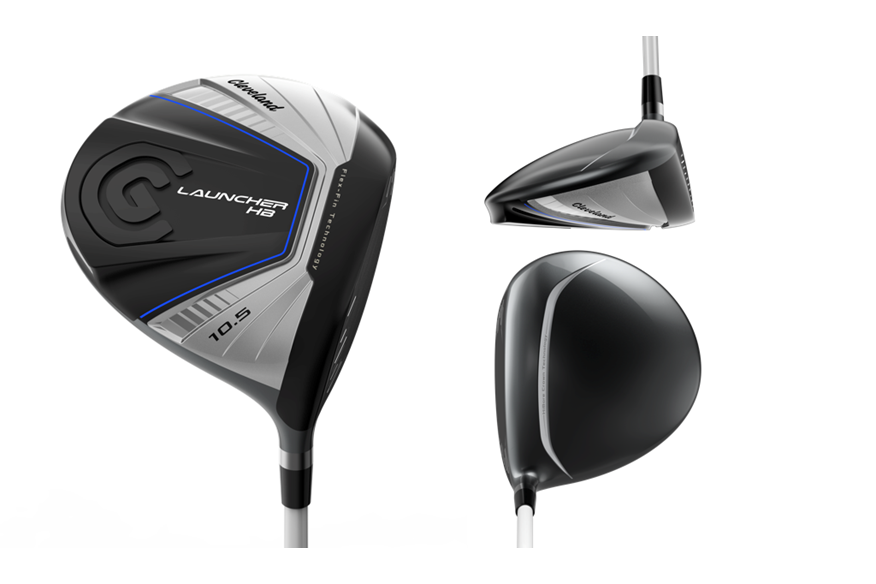
YOU NEED TO KNOW
Cleveland say that by freeing up mass which is usually taken up by adjustable hosels and weight tracks, they’ve created a longer, more forgiving driver. Flex fins direct more energy to the ball, a cup face preserves ball speed on off-centre hits and a HiBore crown promotes high-launching, low-spinning drives.
WE SAY
It’s incredible to think the Launcher, at £279, is one of the least expensive drivers available from a major brand in 2018. The price point is due in part to the Cleveland’s complete lack of adjustability. We like the thinking behind the Launcher – removing adjustability frees up weight, which can be positioned to better influence forgiveness and spin.
The only issue with a single fixed shaft (in regular or stif flex) means taking a huge punt on where the “average” golfer needs weight positioned inside the head (for optimum spin and launch) and which shaft suits the masses. With all that in mind, its impressive Cleveland’s engineers have been able to get the Launcher to perform admirably for all three testers. Our pro generated his single fastest ball speed (159mph, tied with Rogue, Rogue Sub Zero and the Ping G400), while both Simon and Chris were both above their test average carry distance.
VERDICT
The only non-adjustable driver in our test could just about hold its own for all three testers without any fitting. Compared to some, the shaft feels pretty long (probably because it’s white towards the tip) and as the lofts are true the Launcher looks a bit daunting at address. But if you’re not worried about being fitted, the Launcher has everything you need in a driver.
Wilson Staff C300 – £349
| Lofts | 9°, 10.5°, 12° |
| Stock Shaft | Fujikura Speeder Pro 58 |
| Adjustable Hosel | Yes |
| Loft Change | +2/-1° |
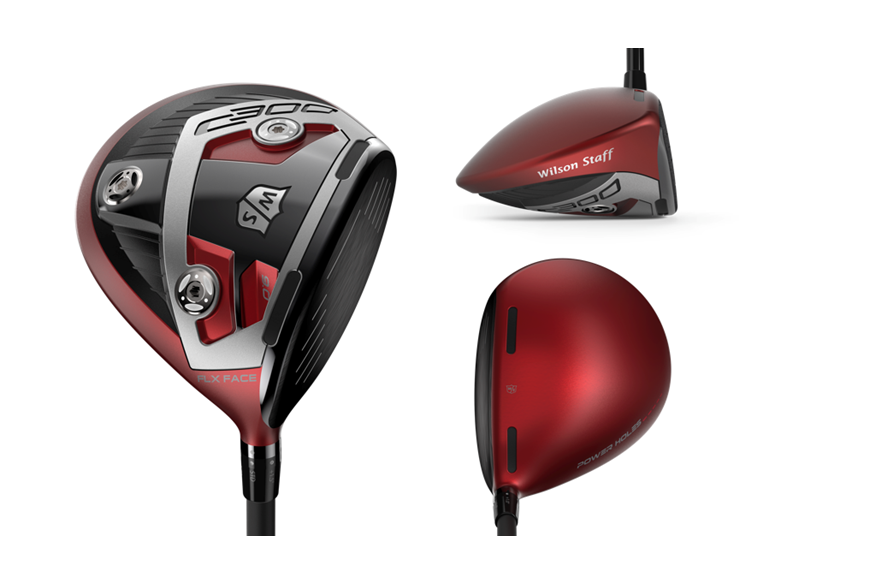
YOU NEED TO KNOW
Speed pockets and power holes have featured in irons for a number of years, and the C300 is the first to bring the tech to the crown and sole of a driver. Wilson say it improves ball speed across the entire face, and alone can add seven yards of extra distance. Three sole weights (2 x 6g, 1 x 2g) can be interchanged to dial in a neutral, draw or fade bias.
WE SAY
Like hybrids, it seems drivers have evolved very much into a couple of body width categories recently. Stretched, wide-body drivers target ultimate forgiveness and protection of ball speed; taller, narrower heads help reduce spin and improve workability. The C300 is unashamedly in the taller category (it has a very deep face), meaning it’s likely to appeal to the “players” market. Slightly surprisingly the C300 was our pro’s lowest spinning driver, which meant it performed well for distance.
A 268-yard carry average was just six yards short of his longest, which says something positive about the effectiveness of Power Hole tech. Red heads aren’t usually everyone’s cup of tea, but if you’re a fan, and own a powerful swing that could benefit from cutting spin, the C300 should definitely be on your shortlist to try in 2018.
VERDICT
Wilson are targeting a very specific player with the C300 – if you fit the bill, trust us, you won’t be disappointed by the performance on offer. Don’t be put off by the power hole’s appearance as they quickly fade into the driver’s design at address. Golfers with much more average swing speeds are highly likely to be better off with Wilson’s speed- optimised D300 instead.
What about The latest draw drivers…? Suffer from a slice or power-sapping heel strikes? Then one of these could be for you!
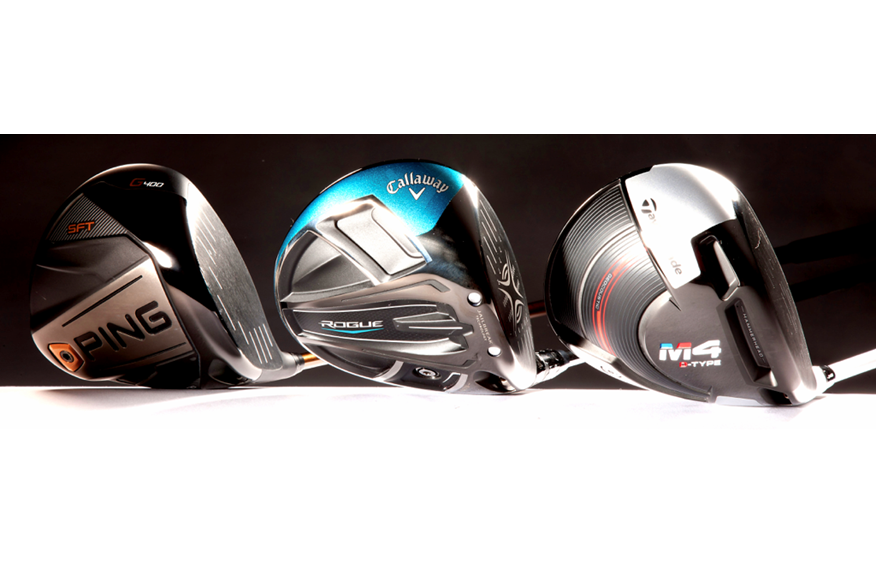
Draw drivers have come a long way over the past two years. So much so that for 2018 each of the three ‘big brands’ – Callaway, TaylorMade and Ping – has produced their leading model in a draw version, too.
If you’re the sort of golfer who has turned their nose up to draw drivers before, remember they aren’t just for slicers. They’re actually great at improving ball speeds for heel strikers, too, as the extra weight in line with those strike locations means the head twists less at impact, losing less energy. This is how the best compare.
Ping G400 SFT – £389
| Lofts | 10°, 12° |
| Stock Shafts | Ping Alta CB55 |
| Adjustable Hosel | Yes |
| Loft Change | +/1° |
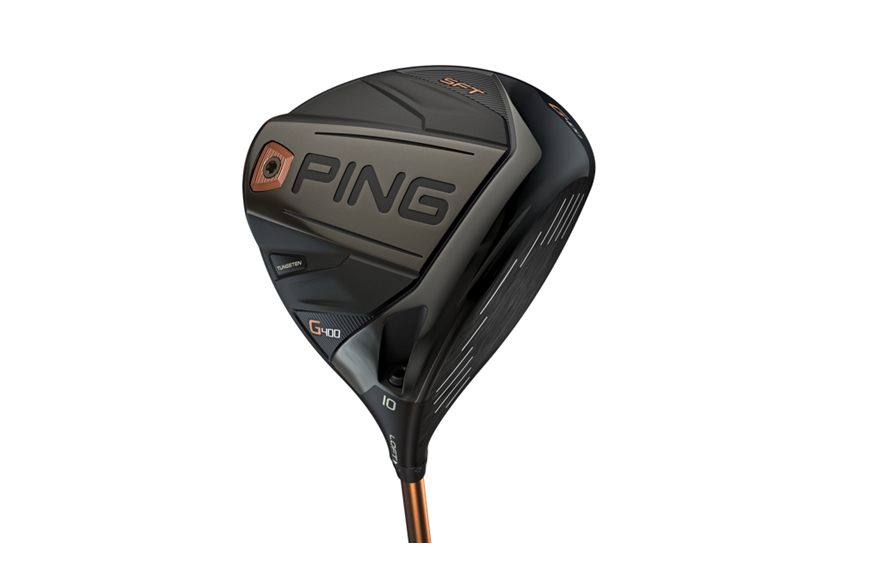
YOU NEED TO KNOW
SFT stands for “Straight Flight Tech”, and Ping say it has been specifically designed to help golfers iron out a slice. More mass is positioned towards the heel to help close the face at impact, counteracting the slice that plagues 80% of golfers. A slightly lighter swing weight maximises swing and ball speeds, as well as helping slower swings square the club face.
VERDICT
It could be said that Ping have pioneered good-looking draw drivers, as slice-busting SFT (Straight Flight Technology) drivers have been part of their range for years. It means the G400 comes with pedigree, and in our eyes the SFT is a proven performer – gear editor Simon Daddow’s had one in his bag since it launched last year.
Like cameras, data doesn’t lie and, though the G400’s been a very solid fairway finder for Simon (it was fitted for him), when it comes to raw ball speed and carry (4-5mph slower and seven yards down on both the Rogue and M4) it didn’t quite compete with the Callaway or TaylorMade. Some golfers will say there’s lots to look at with the G400’s dragonfly crown and turbulators, but we reckon because the head is wrapped in a lovely matt black finish the details quickly vanish into the background.
Callaway Rogue Draw – £469
| Lofts | 9°, 10.5°, 13.5° |
| Stock Shaft | Aldila Quaranta (40g), Aldila Synergy (50g) Project X EvenFlow (60g), Project X Hzrdus (70g/80g) |
| Adjustable Hosel | Yes |
| Loft Change | -1°/+2° |
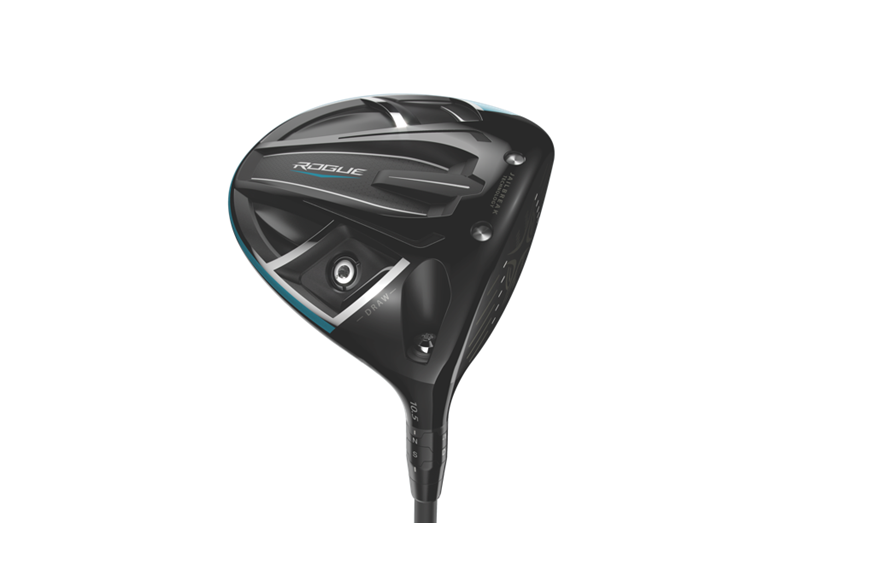
YOU NEED TO KNOW
Draw drivers have come a very long way, over the last 18 months and from looks alone (apart from the name) most golfers would have no idea the Draw isn’t a standard Rogue. Callaway say there’s seven yards more draw bias than golfers got from the Epic, which not only helps keep shots away from the right side of the golf course, but also improves ball speeds for heel strikes. All the same aerodynamic, Jailbreak and composite crown tech as the standard Rogue.
VERDICT
What a change to Callaway’s 2016 draw offering. The Rogue draw is wider, has a streamlined head and bigger footprint look much friendlier than the Epic, which is a huge step forward in our opinion. The Draw head has seven yards more draw bias than the Epic in a draw setting, and it’s worth remembering Rogue’s lower spinning too, so there’s every chance you’ll want to move up a loft for 2018.
As for numbers, the Rogue Draw posted a ball speed 1mph slower than the M4 for Simon, but on average exactly the same carry (as backspin was reduced). Callaway’s idea of offering shaft options from 40g to 80g means even the Rogue Draw can be set up to suit almost all swing speeds.
TaylorMade M4 D-Type – £369
| Lofts | 9.5°, 10.5°, 12° |
| Stock Shaft | Matrix Platinum White Tie |
| Adjustable Hosel | Yes |
| Loft Change | +/-2° |
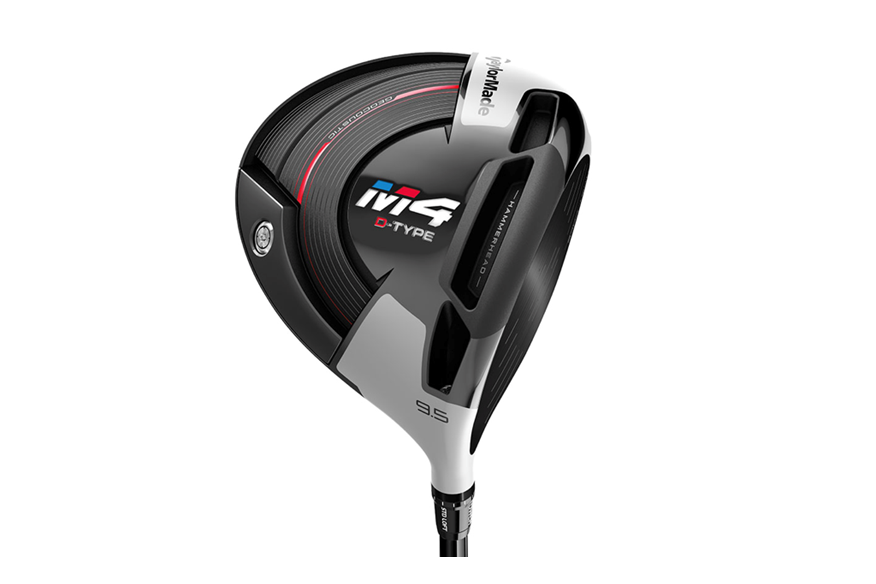
YOU NEED TO KNOW
All the same Twist Face and Hammerhead tech as the standard M4 and M3, but with 41g of weight positioned towards the heel, to fight a slicing shot shape. A very slight off-set gives golfers extra time to square the face at impact, but thanks to a clever paint job the face doesn’t look closed at address.
VERDICT
Time and again we’ve seen TaylorMade battle it out to claim their drivers deliver more ball speed and carry than any other on the market. For Simon at least the M4 D-Type delivered. It gave him his joint longest carry distance (217 yards) with the Rogue Draw (both were fitted), proving draw drivers really can deliver more powerful results, in the right hands. For ball speed alone M4 edged the Callaway, but it’s been said more than once Callaway’s Jailbreak tech has more benefits the faster you swing.
As light and responsive as the Matrix stock shaft is, it would have lowered Simon’s average carry by 13 yards, which reinforces the importance of a proper fitting. If you’re wondering if Twist Face actually works, high-toe shots with the D-Type produced 3mph more ball speed, 125rpm more back spin and 93rpm less side spin. That all added up to seven more yards than Simon’s test average.
Isn’t the Cobra F-Max a draw driver, too?
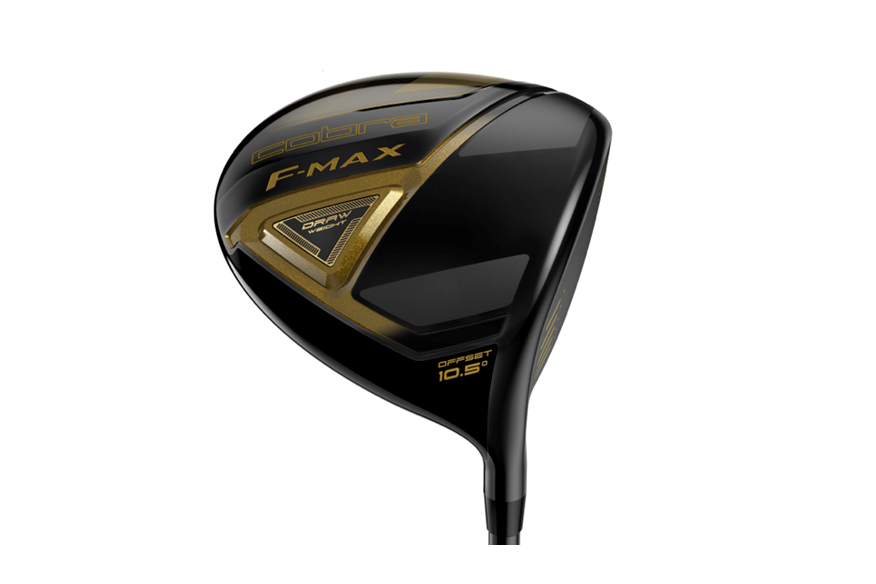
Eagle-eyed gear nuts might be wondering why we’ve not included Cobra’s F-Max draw driver in our test… well we did, but the results weren’t quite what we expected. It didn’t need the brain power of Einstein to work out that the Cobra is aimed at a very different audience to the draw models from Callaway, TaylorMade and Ping. Even at Simon’s average swing speed, the F-Max launched shots four degrees higher, with 2,500rpm more backspin than average.
That meant shots flew high, but not very far. Throw in the fact the Cobra doesn’t have an adjustable hosel and only comes in a single shaft option and you can see we were not the target golfer for this model. This absolutely doesn’t mean the F-Max is a bad driver; in fact, it’s very nicely set up thanks to the off-set hosel and thicker grip to perform for the senior golfers who really could do with generating more air time to maximise distance.
Cobra F-Max – £229
| Lofts | 9.5°, 10.5°, 11.5 |
| Stock Shaft | Cobra Super Lite 50 |
| Adjustable Hosel | No |
YOU NEED TO KNOW
Specifically designed for golfers with moderate swing speeds. Back and heel side weighting offers maximum draw bias and higher launching drives for more carry distance from slower swings. Lighter shafts and overall weights, plus an off-set hosel, generate speed and help eliminate a slice. A crown stripe aids alignment.
2018 Drivers Test: 6 Things We Learned
| Driver | Cost Per Yard (£) |
| TaylorMade M3 | £1.75 |
| Titleist 917 D2 | £1.74 |
| Callaway Rogue | £1.71 |
| Mizuno ST180 | £1.52 |
| Ping G400 | £1.48 |
| TaylorMade M4 | £1.40 |
| Wilson Staff C300 | £1.30 |
| Cobra King F8 | £1.26 |
| Cleveland Launcher HB | £1.06 |
1. Set up your adjustable driver very carefully
Our pro saw a 13-yard gain going from the standard stock shaft of TaylorMade’s M4 to a custom option which much better suited his game. Similarly, positioning the M3’s weights incorrectly created too much or too little backspin which, left unchecked, could have cost 13 yards of carry. That’s huge.
2. Draw drivers can be a brilliant option
Comparing draw to standard models, Simon saw gains of 6mph of ball speed and 14 yards of carry distance. For us that means draw drivers are not just for slicers. If your poor strikes come from the heel, you too can find extra ball speed and distance by having a look at the latest draw models.
3. To go longer, aim for a high toe impact
Our test pro hit 75% of his test shots from the high toe quadrant on the driver’s face – on average these shots ew 11 yards further than his low heel strikes. If you want to rinse every last drop of juice from your driver, aim to impact shots above the centre and slightly towards the toe.
| The Three Lowest Spinning Drivers For Our Test Pro |
|
| Cobra F8+ | 2351rpm |
| TaylorMade M3 | 1892rpm |
| Wilson Staff C300 | 1850rpm |
4. You need a choice of shaft weights
Shaft choices are nothing new, but how brands now segregate shafts into weight categories (often 40g-70g) makes it easier to find a shaft you like, and suits your game. Once you know which you like/are suited to (lighter or heavier) your choice is narrowed immediately for you next fitting, too.
5. Non-adjustable drivers open up a whole new can of worms
The best driver designers wouldn’t argue that non-adjustable drivers don’t free up weight which is taken up by weight tracks and adjustable hosels. But plumping for a single model, with one shaft option like the Cleveland, is a bit like designing a one-size-fits-all shoe. If that’s your size, it’s a brilliant, simple option.
6. Sacrificing speed for forgiveness isn’t a bad option
Speed and drag reduction has been at the top of the driver design agenda for years. So it’s interesting to hear Ping say for some golfers, a less aerodynamic but extremely forgiving driver can just about out-perform a speedier model. The G400 MAX is particularly good if you hit shots all over the face.
_
